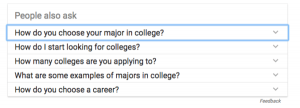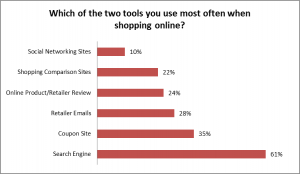Whether you want to increase awareness about your brand, product or service or reach out to new customers, your business goals should motivate how you use Facebook.
Some B2B marketers believe that running a few ads will be enough to meet these goals. But the truth is, it comes down to good, old-fashioned strategy.
Do you want to use Facebook to better your business outcomes? Check out these Facebook advertising strategy options and see how they can benefit your business.
Timeline posts
Traditional timeline posts are, in theory, simple. Sometimes referred to as status updates or news feed posts, these posts appear on your followers’ timelines. Your followers can then like, comment or share them.
Posts are great for starting conversations with followers and get them engaged with your brand. If your ideal business outcome is to increase brand awareness and build a positive rapport with followers, then start with timeline posts.
With your posts, you’ll start to build a voice that followers can connect with. When they start benefitting from your helpful posts, they’ll come to trust you, even if they’ve never bought anything from you.
When running timeline posts, try the 80/20 rule – the unofficial golden rule of social media marketing. Eighty percent of your posts should come from third party sources, such as blog posts, interviews or breaking news updates. These posts relate to your industry niche but do not directly promote your brand.
The remaining twenty percent should be self-promotional updates. You might announce your latest blog post or post a link to one of your more popular products or services.
By limiting your promotional posts, you will show your audience that you see them as more than customers. You’re trying to start conversations and keep them updated on new developments.
Dark posts
When you have a great product and you can’t decide which of your demographics it will appeal to the most, dark posts will be your best friends. These ads look like regular timeline posts, but they’re actually advertisements.
You can also control who sees them, making them invaluable A/B testing tools. Best of all, they’re never published to your own news feed, so only your targeted audience will see the ads. If they try to go to your news feed, the ads won’t be there.
Imagine you have a new product and two calls-to-action to promote it to the same demographic. You create two ads, each with its own call-to-action, but you don’t want to display both to the same group of followers. They might get annoyed with all the ads.
With dark posts, you can split your demographic, and then show one ad to one group and the other ad to the other group. Once you compare how the ads perform, you will have a better understanding of what your demographic prefers.
Dark posts allow you to test and re-test ads at all times of the day without clogging up your news feed. With the data collected, you can craft better, more targeted ads, and also begin to understand your follower’s wants and needs a bit better as well.
Facebook Advertisements
Facebook advertisements have come a long way since the company first launched them. The site’s targeting technology will help you reach out to clients already in your database, and also get in front of potential new clients who are demographically similar to your current clients.
These advertisements serve a multitude of functions. They can promote brand awareness, display images of products that Facebook users have looked at on your site, and promote deals and offers from your site. You can also promote your mobile or desktop app or an upcoming event.
Typically, these ads appear on the right-side column, and they offer plenty of options to meet your needs.
You also have two types of ad targeting at your disposal via Facebook ads:
Custom Audience
Upload the emails in your database to Facebook, and the site will cross-reference that data with the emails of registered accounts. Once it finds matches, Facebook will then display your ads to the matching accounts.
Similar Audience
Search for new clients (specifically, prospects who are not already your followers) who meet the same demographic criteria as your current customers. You can finely target a small number of closely-matched users or a large number of accounts that don’t quite fit your demographic as well. Both have potential for uncovering new parties who might be interested in your product or service offering.
Don’t forget to include an image with these ads. Images catch the eye first, so chose a clear, relevant image for each and every one of your ads.
Tips for writing Facebook ads
No matter which of these outreach types you chose, there are a few rules you should be following when writing your copy:
- Keep a light, conversational tone.
- With timeline posts especially, pose a question to encourage people to talk.
- Double check for any spelling or punctuation errors.
- Use jargon sparingly.
Summary
Facebook has opened up a range of new targeting and messaging options. Which of these have you found most effective? Which has been your biggest challenge? Comment below and let’s discuss.
Digital & Social Articles on Business 2 Community(61)
Report Post




